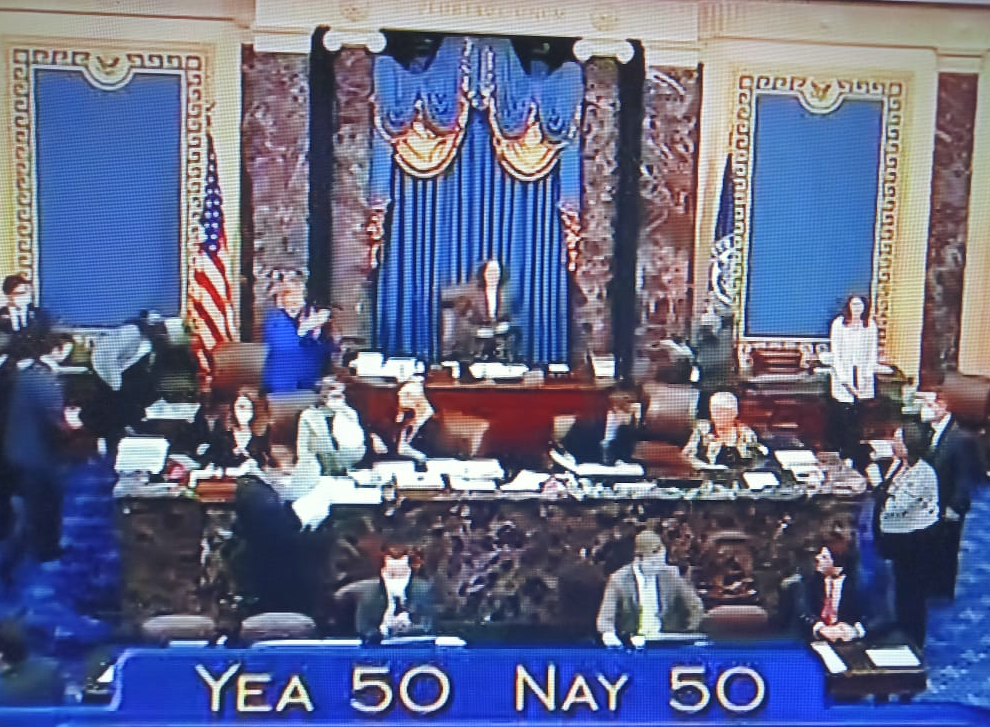
Facing deep anxiety over the U.S. presidential election in the year ahead of this weekend’s three-year anniversary of the January 6 insurrection at the Capitol, domestic terrorism remains a paramount national security concern for the United States. “For the first time in its sixteen-year history,” an annual survey on threat priorities conducted by the Council on Foreign Relations (CFR) “found that the leading concern for foreign policy experts is not a foreign threat to U.S. interests but the possibility of domestic terrorism and acts of political violence in the United States, particularly around the 2024 presidential election.” Far-right extremism, in particular, has proven itself to be the deadliest ideological threat in the country. Data from New America shows that since 9/11, extremists associated with far-right ideologies – an umbrella covering white supremacy, anti-government, militias, and anti-abortion ideologies, but not incel/misogynist ones – have contributed to the most deaths on U.S. soil of any extremist ideology, including jihadism. While polarization has been widely noted on both sides of the American political spectrum, far-left extremism has contributed to many fewer deaths than either far-right or jihadist extremism in the United States, although the Center on Strategic and International Studies found “a historically high level of both far-right and far-left terrorist attacks in 2021.” According to the U.S. Department of Homeland Security, the largest category of U.S. domestic terrorism incidents that took place between 2010 and 2021 were racially or ethnically motivated, while the second largest was based on anti-government/anti-authority sentiment.
In August, a man wearing a Rhodesian army patch – an important symbol of the white power movement – shot several Black customers in a store in Jacksonville, Florida, using a Swastika-adorned rifle after he was apparently prevented from entering a nearby, predominantly-Black university. In 2022, another man killed ten Black grocery shoppers in Buffalo, New York, deliberately selecting the site to target African Americans. The terrorist also produced a manifesto referencing the “Great Replacement” theory, which contends that whites are being actively “replaced” by non-white immigrants in a plot orchestrated by global elites and/or Jews, as well as paying homage to other far-right violent extremists. Neither of the killers in these incidents appeared to have ties to any organized extremist groups, pointing to the threat of individual radicalization producing mass atrocities. The shooters’ invocation of symbols and narratives of the far-right and white power movements not only demonstrates the influence of the far-right milieu on violent extremists but also how they may identify with the broader movement, even if they lack formal ties to established groups. Beyond these attacks, whose racial motivations were laid out in manifestos published online by their perpetrators, there has also been an increase in violence targeting public officials and employees, while some conspiracies continue to resonate with the American public. A quarter of Americans – and over a quarter of Republicans – polled by the Washington Post and University of Maryland believe it at least probable that the FBI was behind the January 6 riots, while 30 percent of Americans believe U.S. President Joe Biden’s 2020 election was made possible by voter fraud, according to a poll published by Monmouth University in June. These conspiracies have continued to manifest in physical violence. In early August, a 75-year-old man in Utah was killed in an FBI raid while agents attempted to serve arrest and search warrants inside his residence. The man had allegedly made threatening posts on social media against President Joe Biden and New York County District Attorney Alvin Bragg, which were deemed credible ahead of the president’s visit to that state.

The U.S. government has taken a number of steps to demonstrate it is taking the issue seriously, even directing some of these efforts internally. In 2021, the White House released a National Strategy for Countering Domestic Terrorism for the first time, in an acknowledgment of the severity of the issue. In the wake of January 6, the U.S. military instigated a program to counter extremism within its ranks. This effort by the military included U.S. Secretary of Defense Lloyd Austin’s establishment of a dedicated working group, which among other things began to incorporate training for outgoing service members for their potential to be targeted by extremist groups and commissioned a study of extremist behavior within the U.S. Department of Defense (DoD). While the study – released last month after delays – found no evidence that active U.S. military service members are disproportionately involved in violent extremists compared to the general American population, it found that veterans showed a “slightly higher” and potentially growing participation rate. The report also says that the lack of a unified definition throughout the DoD for extremist activities or ideology has made it difficult to effectively gather data on the issue or create effective strategies to manage the problem.

Many terrorism experts still consider the United States a net exporter of far-right and anti-government extremism, inspiring and motivating sympathizers abroad to commit violence and disrupt democratic processes. The narratives motivating January 6, as well as the symbolism of the event itself, have deeply resonated with far-right violent extremists and accelerationists in other countries, including Germany, South Africa, and Brazil. Reflecting these increasing linkages, there is a growing recognition by UN member states of the transnational far-right terrorist threat facing the West and beyond. The international community has continued to consider how international cooperation, as well as multilateral tools developed to counter terrorism in the post-9/11 era, can be utilized to combat the growing transnational threat. Moreover, the ideologies and narratives that inspired and motivated the January 6 insurrection not only continue to resonate with disaffected individuals, but such narratives have proliferated into the political mainstream. Far-right populist parties throughout the West have continued to strengthen and move beyond their traditional strongholds, and some U.S. politicians continue to embrace narratives that helped motivate January 6, including the “Big Lie” denying the legitimacy of the 2020 presidential election, anti-government sentiment, and Christian nationalism. This demonstrates the resiliency, adaptability, and longevity of far-right narratives and ideologies, with vast implications for several important elections around the world this year, including in the United States and the European Parliament.





